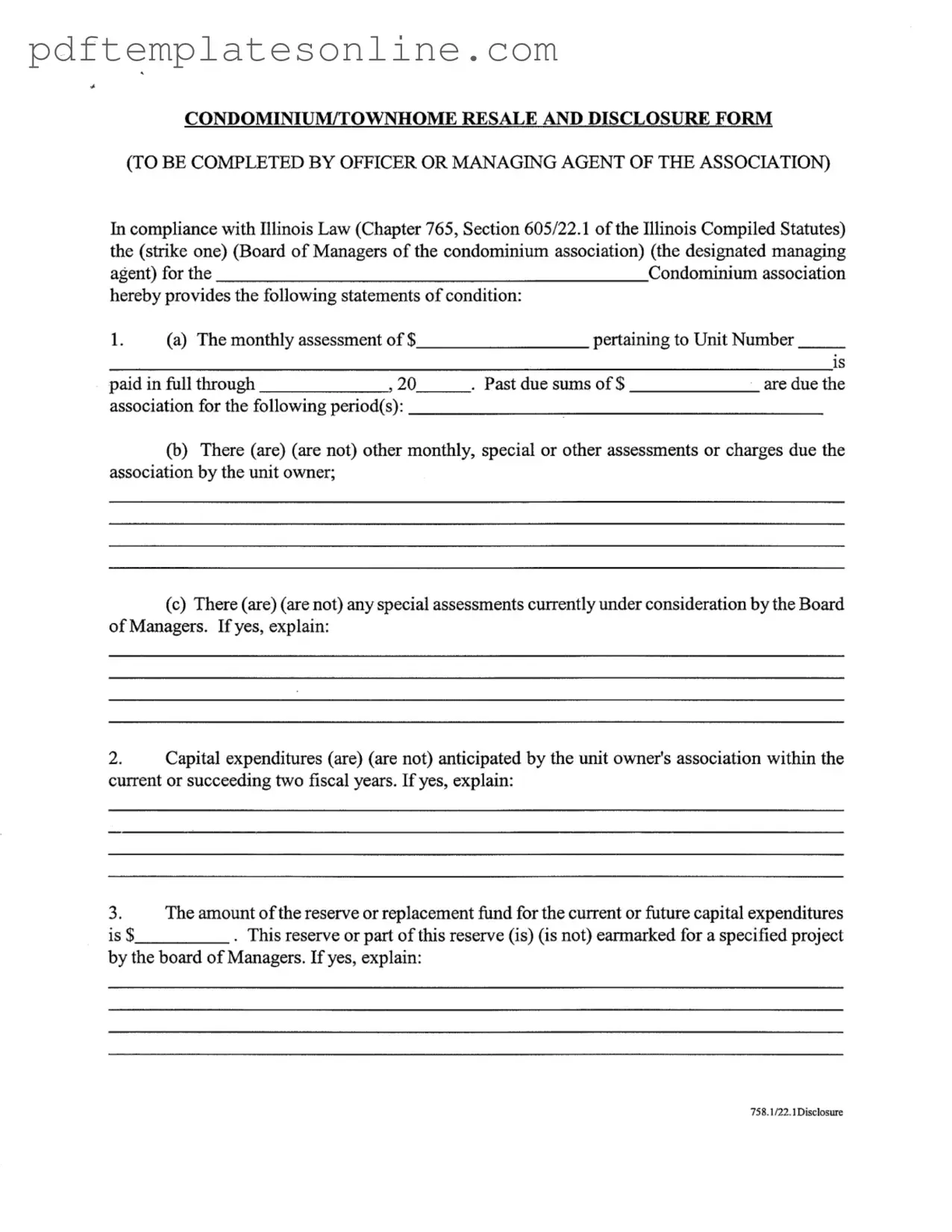Blank Act 221 Disclosure Form
The Act 221 Disclosure form is a crucial document for anyone involved in the resale of condominiums or townhomes in Illinois. It provides important information about the financial and legal status of a condominium association, ensuring that potential buyers are well-informed. Understanding this form can help buyers make better decisions and protect their investments.
Access Act 221 Disclosure Editor Now
